|
Published on Archi.ru (https://archi.ru) |
|
| 25.05.2022 | |
|
Oleg Manov: “There is no “happy medium” – you need to constantly either prove or create it” |
|
|
Alyona Kuznetsova |
|
| Studio: | |
| FUTURA-ARCHITECTS | |
|
Oleg Manov shares about how FURURA ARCHITECTS turned from a young architectural company to an established one: through being faithful to the idea of creating something new and unseen before, through architecture-related activities, through attention to drawings and models, and studying the relationship between new buildings and their surroundings. Archi.ru  Oleg ManovCopyright: © FUTURA-ARCHITECTSParallel to the regular school, I also graduated from the art school, and then I entered the architectural department of the Academy of Fine Arts. In the Academy, I wanted to design houses different from the rest, and different from what my parents were doing – I had a total feeling that they were running in circles. If we recall the 1980’s, we all wore the same clothes, read the same newspapers, and in the Academy I was also faced with “sameness”: many of the students took the line of the least resistance, borrowing the solutions used by their predecessors. We had a great stockpile of albums full of lookalike projects, dragging from year to year. My love for new things cost me my grades. It was then that I realized that it wouldn’t be a walkover. When I worked for Evgeny Gerasimov, I was already often faced with a situation when our clients would say: “We will not do it because we never did it”, and the builders would say: “This is impossible”. Little has changed since then, and to me this is a constant challenge. I know that when people say “We don’t know how to do it because we never did it” we are on the right track because this is exactly what we are going to do right now. An architectural installation for a checkpointCopyright: © FUTURA-ARCHITECTSCould you please share more about working for Evgeny Gerasimov? I came to work for Evgeny Gerasimov almost immediately after I graduated from the Academy of Fine Arts, and I worked for him for almost nine years. I was choosing the company that I would work for based on their projects – back then, there were already websites where you could see what the company was doing. People kept telling me that working there would be hard, that I would have to work overtime, but this was what I was looking for because I wanted to grow professionally. As for high-profile projects, I took part in designing the hotel at the Ostrovsky Square, “Nevskaya Ratusha”, the “Venice” house, and the housing complex in the Kovensky Lane. How did you come to the decision to create your own company? My urge to make something that’s different from what was there before never left me, and ultimately led me to creating a company of my own. We started a firm with my partner Dmitry – he is responsible for the development, and I am responsible for the creative process, design, HR, and client relationship. Today, we are purposefully trying to make projects that are different from everything that is already there. Young and ambitious clients are usually ready for this, and it’s much harder to convince well-established developer companies of such concepts, but we still offer them anyway – as a result, we did projects for such development giants as LSR, RBI, and UIT. Being different and being unique does not necessarily manifest itself in the building’s shape or its relationship with the context. It can be hidden in the materials, interior design, or other details. The Novoselye community centerCopyright: © FUTURA-ARCHITECTSWhat were the first projects done by FUTURA-ARCHITECTS? Our first large-scale project was the “New Farm” museum center in the state-owned reserve-museum “Peterhof”. This project developed really fast: less than a year elapsed from the initial negotiations to the opening, and this considering the fact that it was a very diverse task: the program of the center was devised for children of different ages, and we had to design various facilities – from a movie hall to a laboratory. The museum center “New Farm” in teh state reserve/museum PeterhofCopyright: © FUTURA-ARCHITECTSYou found this client thanks to us publishing our own magazine [where all the pictures were hand-drawn – editor’s note.] Could you please share more about how architecture-related activities moved your career forward? The magazine, the exhibitions, manifestos, and arch meetings – all these are different ways to express ourselves, and, yes, find clients as well. I organized exhibitions as I still went to the Academy, trying to search for different ways of realizing my creative insights. I can still remember that once I completed a large order – I was then doing odd jobs piecing together architectural models – I went to travel through Europe and visited Paris, Berlin, Brussels, and Amsterdam. As a result of my trip, I made a photo exhibition; it was very interesting back then. In FUTURA-ARCHITECTS, we also tried to find possible points of contact with the colleagues, clients, and everyone who cares for architecture. As an option, we settled for a magazine – we did three issues [you can see it – editor’s note]. When we were preparing materials for it, we got acquainted with art experts who did the “New Farm”, and this is how we landed the commission. Later on we realized that publishing a full-fledged magazine is too much of a task for an architectural company, because you had to open a special division for it. Exhibiting at trade shows is less labor-consuming, you can do this parallel to your main work. Now we have made a decision that when we have an opportunity to fully engage our resources with projects, we do not get distracted with exhibitions. Did you develop your special love for architectural drawing in the Academy of Fine Arts? Is hand drawing always an indispensable part of your creative process? How is the creative process organized in your studio? I do not think with my pencil, as I am sure many others do: even in our studio I often see this picture: a person goes away from their desk for a second, and their desk is absolutely covered in drawings. This is not how I do it. I first think up everything in my head, and then the drawing for me is just a tool, with which I check the proportions, or the object’s views from different sides. Sometimes you have an opportunity to make a model, sometimes you don’t; sometimes things happen so fast that you have to start from drawing your details in the AutoCADCivil, like it actually was with the house on Gastello Street. The house on Gastello StreetCopyright: © FUTURA-ARCHITECTSHowever, we normally do sketches, models, and BIM models – we test every project from all sides. We have quite a lot of material. At the end of 2019, we were approached by the Shchusev Museum – first they asked us to work for their auction, and then they took for their archives sketches of complete or in-construction projects – there were about 40 of them. One of our drawings has long since been exhibited in the Sergei Tchoban Museum of Architectural Drawing, of which I am very proud. The “Weightlessness” drawing kept in the museum of architectural drawing in BerlinCopyright: © FUTURA-ARCHITECTSSince we do know how to make convincing visualizations, as well as have a desire to participate in trade shows and interact with our colleagues, I only do drawings for myself, in order to test this or that idea. When there is a similar situation when we have to come up with a quick proposal, a turn to these sketches, and the form turns into a real object. The brick housing complex “New Piter” was born exactly this way – only not from a sketch but from an installation that we did for the exhibition of the Union of Creative Studios in “Golitsyn Loft” with Ilia Yusupov. The installation for the OAM exhibition in Golitsyn Loft.Copyright: © FUTURA-ARCHITECTSThe New Piter housing complexCopyright: © FUTURA-ARCHITECTSYour company is already ten years old – what are your main achievements? How did the company develop? We kept a team of 15 people for about five years. Today, our team is also relatively small – from 20 to 25 people, but this allows us to do from 2 to 4 projects simultaneously, which is important. Given the reality of today, you cannot afford to do just one project because it can stop at any moment, but having more than 5 projects going at the same time will compromise quality. After the “New Farm”, we did interior design projects, landscape design, and the development concept for the Flandria Plaza business center. Our housing block proposal came second at the First Young Architectural Biennale in Kazan. This gave us an opportunity to secure yet another contract, the one for the Salavat Kupere housing complex, which we did together with the two other winners – Citizenstudio and KPLN. This is meant to be a social housing project, and the developer wanted us to add some extra value to it. The large-scale project “Uralvagonzavod” got agreed by three chief architects: Oleg Rybin, Yuri Mityurev, and Vladimir Grigoryev. Everything was ready for the expertise but the project was eventually frozen. The same thing happened to the competition project for the village of Yukka, where we developed the residential housing, administrative buildings, a shopping mall, and a few privately owned houses. One of the first projects that we did for LSR was the residential building on Gastello Street that was not implemented solely because of the fact that the site was bought out by another developer.  The proposal of a housing complex for the first Young Architecture Biennale in KazanCopyright: © FUTURA-ARCHITECTS The proposal of a housing complex for the first Young Architecture Biennale in KazanCopyright: © FUTURA-ARCHITECTS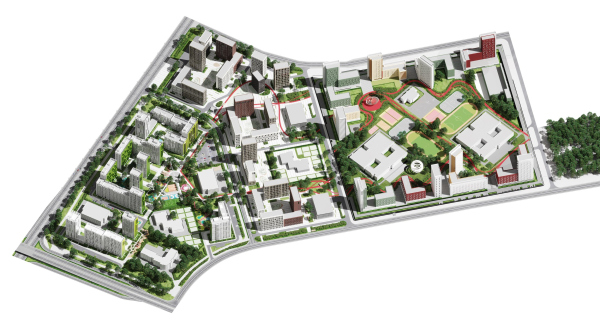 “Salavat Kupere” housing complexCopyright: © FUTURA-ARCHITECTS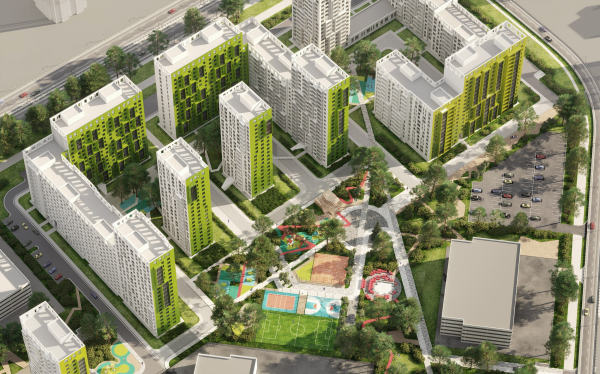 “Salavat Kupere” housing complexCopyright: © FUTURA-ARCHITECTS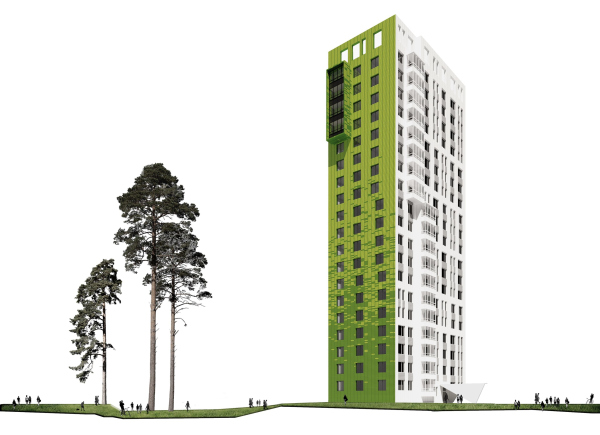 “Salavat Kupere” housing complexCopyright: © FUTURA-ARCHITECTS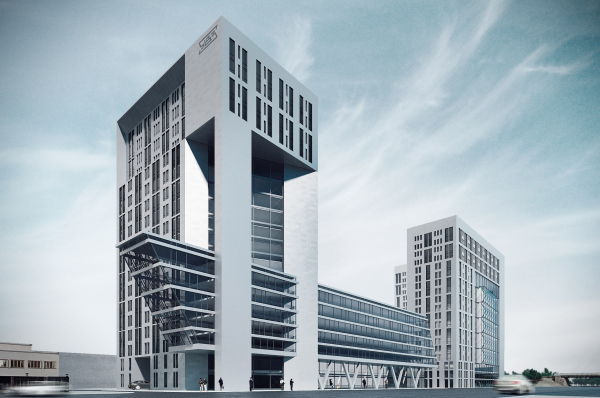 “Uralvagonzavod” R&D centerCopyright: © FUTURA-ARCHITECTS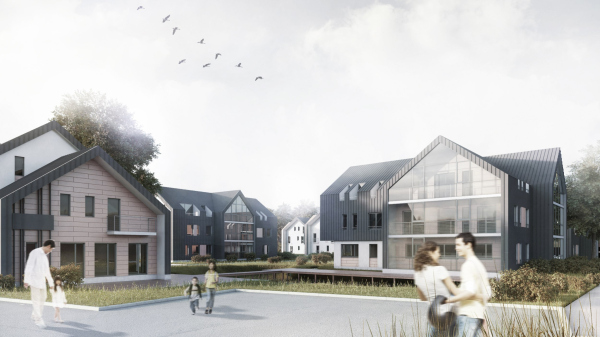 The project of renovating the village of YukkaCopyright: © FUTURA-ARCHITECTSIn the final stage are now the businesses center and the fitness center in Novoselye, a sports center in Ozerki, and this summer the “New Piter” complex will be put into operation. The housing complex on the Oktyabrskaya Embankment has received the Architectural and Town Planning approval, and has passed the expertise; another project that we also did for LSR on the Moskovsky Avenue is also in expertise. 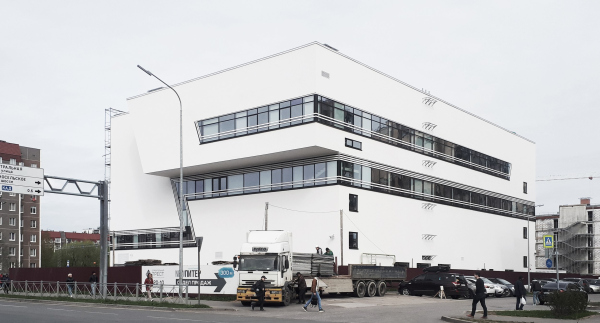 A fitness an sports center in NovoselyeCopyright: © FUTURA-ARCHITECTS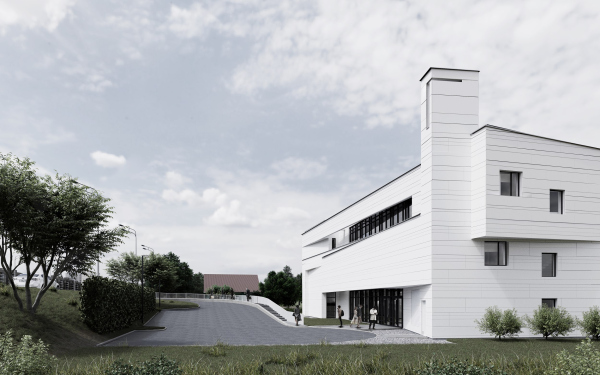 The sports center on the Vyborg HighwayCopyright: © FUTURA-ARCHITECTS The housing complex on the Oktyabrskaya EmbankmentCopyright: © FUTURA-ARCHITECTS The house on Egorova StreetCopyright: © FUTURA-ARCHITECTSAbout 50% is complete of the “White Nights” pedestrian boulevard that runs through New Piter. We did about five landscaping projects for RBI. We also continued cooperation with the Peterhof Museum / Reserve – we came up with a quest intended to lure the visitors into the remote corners of the park, as well as an installation, in which you can make exhibitions in front of the palace.  The “White Nights” boulevard in the New Peter housing complexCopyright: © FUTURA-ARCHITECTS The “White Nights” boulevard in the New Peter housing complexCopyright: © FUTURA-ARCHITECTS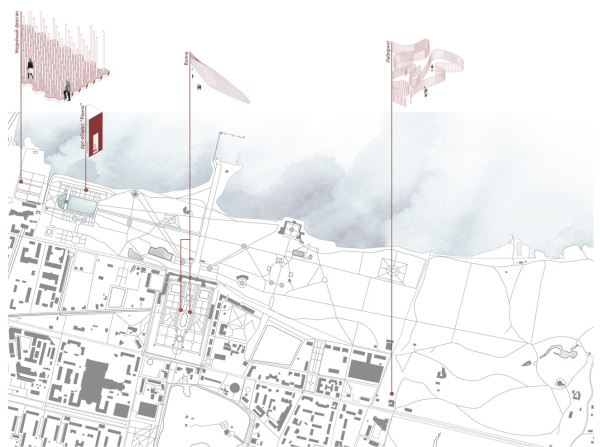 The “Peterhof of the Future” installation seriesCopyright: © FUTURA-ARCHITECTS The “Peterhof of the Future” installation seriesCopyright: © FUTURA-ARCHITECTS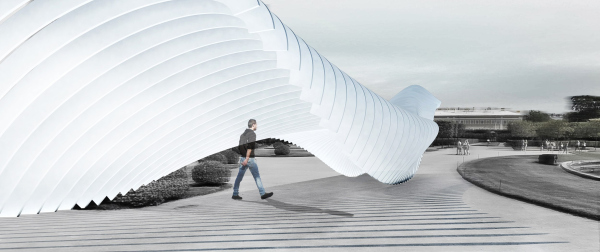 The “Peterhof of the Future” installation seriesCopyright: © FUTURA-ARCHITECTSCurrently, we are cutting down the number of our branches, trying to focus more on general design, because our resources and brand awareness have grown. Sometimes, however, if a super-unusual proposal comes in, we agree to do interiors or landscaping. At which point in time did FUTURA-ARCHITECTS stop being a “young company”? After you’ve been working for ten years, you definitely cannot call your company “young”. However, the clients keep it simple and divide all the architects into two categories: the young ones who are good at making 3D renders, and the experienced ones who can do projects as general designers. There is no “happy medium” in this division – you need to either constantly prove or create it. Companies that are full of ideas, can be general designers, and are young at the same time, are few and far between. Since 2016, you have been a member of the Board of the St. Petersburg Union of Architects, since 2021 – in the Association of Architectural Firms (OAM) – what are the benefits? We have long since wanted this, and we were happy to be invited. OAM is a club for legal entities, not private persons. Right now there are 16 of them, and the membership gives us an opportunity to discuss professional topics and broadcast our opinions on the outside. These meetings can give impetus to transformations, for example, in legislative norms – we can collectively make a proposal to the Committee for City Planning and Architecture or the Committee on State Control, Use and Protection of Historical and Cultural Landmarks. In what direction will FUTURA-ARCHITECTS develop? We are most of all interested in doing two things. One: the questions of interrelationship between a new building and its context. Virtually any shape of the building you can conceive of has been posted online, you cannot dream up much in that respect – but the options for its interrelation with the surrounding context are endless. To give but one example: we are currently working on the headquarters of a large company, which will be located in a courtyard – it must look presentable, yet almost visible from any of the nearby streets. Two: how a person interacts with a building at the level of detail and material. Both of these moments can be felt only by being in a specific place – by seeing the building with your own eyes, approaching it from different sides, and peeking inside. |
|






